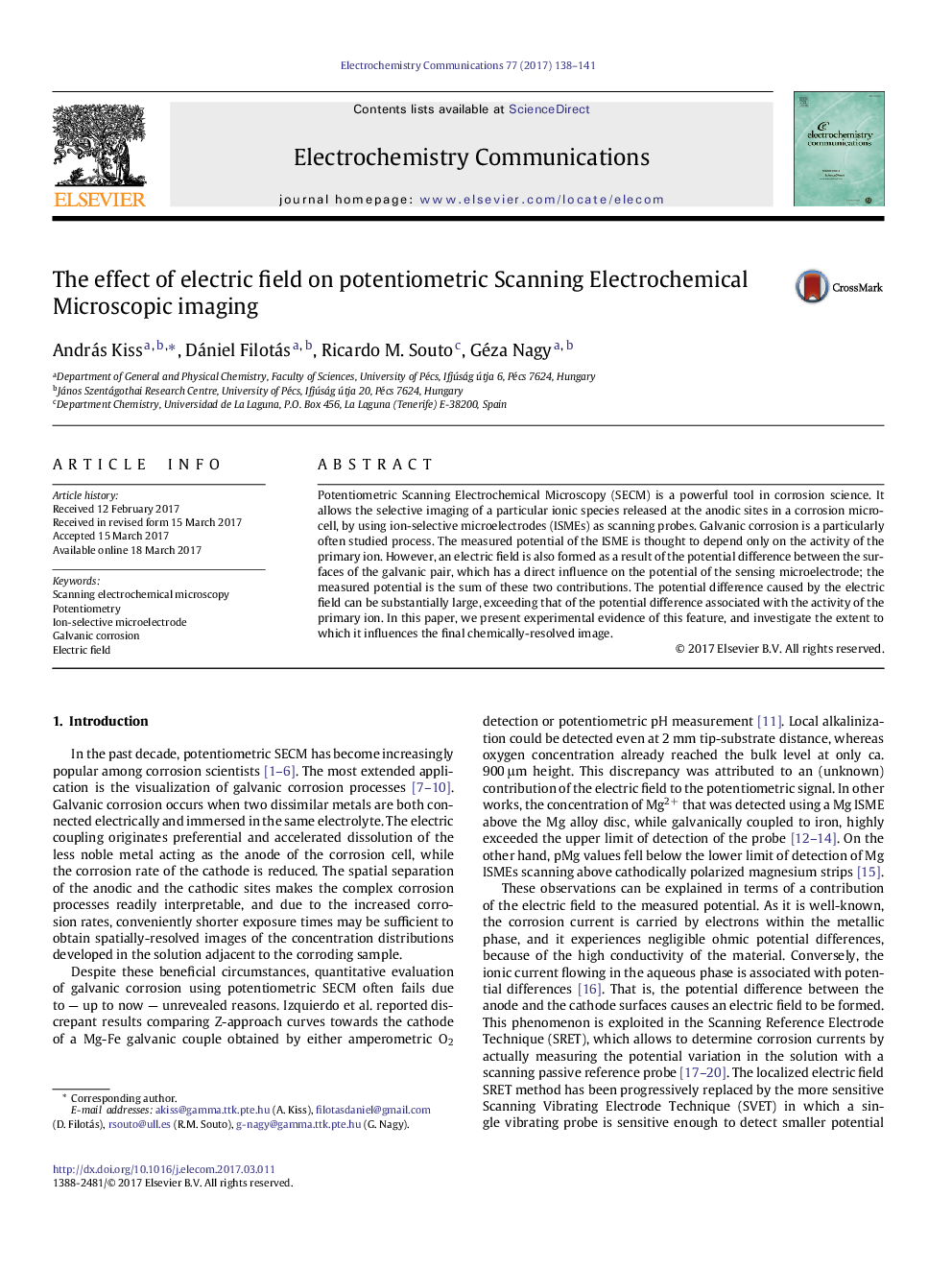| Article ID | Journal | Published Year | Pages | File Type |
|---|---|---|---|---|
| 4766470 | Electrochemistry Communications | 2017 | 4 Pages |
Abstract
Potentiometric Scanning Electrochemical Microscopy (SECM) is a powerful tool in corrosion science. It allows the selective imaging of a particular ionic species released at the anodic sites in a corrosion microcell, by using ion-selective microelectrodes (ISMEs) as scanning probes. Galvanic corrosion is a particularly often studied process. The measured potential of the ISME is thought to depend only on the activity of the primary ion. However, an electric field is also formed as a result of the potential difference between the surfaces of the galvanic pair, which has a direct influence on the potential of the sensing microelectrode; the measured potential is the sum of these two contributions. The potential difference caused by the electric field can be substantially large, exceeding that of the potential difference associated with the activity of the primary ion. In this paper, we present experimental evidence of this feature, and investigate the extent to which it influences the final chemically-resolved image.
Keywords
Related Topics
Physical Sciences and Engineering
Chemical Engineering
Chemical Engineering (General)
Authors
András Kiss, Dániel Filotás, Ricardo M. Souto, Géza Nagy,
